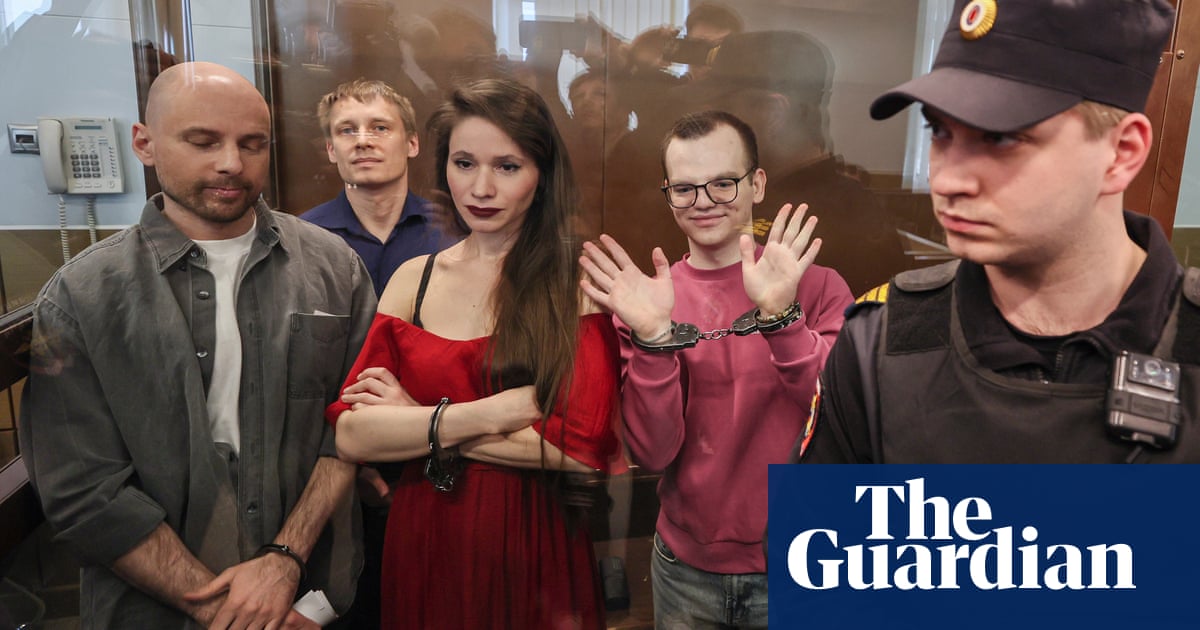Donald Trump has unveiled a new portrait of himself and it’s the most autocratic yet. A painted version of his fist-pumping stance after being shot in July 2024 now greets visitors in the entrance hall of the White House. This “Fight, fight, fight!” canvas is true strongman art.
It is just the latest in a series of artistic moves by Trump that look disturbingly tyrannical. When he complained that a portrait of himself in the Colorado State Capitol building was “purposefully distorted” it was taken down as quickly as if the US were Stalin’s Soviet Union. And he has ordered JD Vance to purge the Smithsonian museums of “improper ideology”. But how seriously should any of this be taken? Is it an urgent threat to democracy and culture or mere muscle-flexing?

A show currently in Paris offers a troubling historical perspective on Trump’s art antics. “Degenerate” Art: The Trial of Modern Art Under Nazism, at the Musée Picasso, takes you back to the age of the dictators when totalitarian regimes sought to control art absolutely and use it to their own ends. I wasn’t keen to plunge into Nazi cultural history after the sunny pleasures of David Hockney’s epic retrospective, but I was politely dragged along. The chill was instant.
The show opens with fragments of sculpture displayed like archaeological relics – which is what they are. In 2010, archaeologists in Berlin excavating land cleared for a new underground line discovered not Roman coins or a medieval plague pit but remains of modernist artworks confiscated by the Nazis, branded “degenerate art” and dumped in a store that had been bombed in an air raid in 1944. The most compelling fragment, by the expressionist sculptor Emy Roeder, is the head of a primitive angelic being, severed at the shoulders. It’s a reminder of the fate of modernist art in German museums in the 1930s. Much of it was destroyed or lost, but not all.
In 1937, more than 700 works of modern art went on display in Munich in the exhibition Entartete Kunst (Degenerate Art) in order to be held up to ridicule and contempt. Afterwards, those with the most market appeal were sold abroad to benefit the Reich. At the Musée Picasso, some of these masterpieces have been reunited, borrowed from the collections where they ended up. Ernst Ludwig Kirchner’s 1913 painting Street, Berlin has come from MoMA in New York.
Its purple and black energy lifts you, as Kirchner depicts edgy, eroticised city life on the eve of the first world war, with two women parading past a crowd of sexually intimidated men. Kirchner’s painting was condemned for its attack on classical order and harmony, its jagged planes and purposeful distortions. Metropolis is another riotous vision, as the artist George Grosz equates artistic and political revolution.

These and other “degenerate” works were contrasted with the “healthy” Nazi art that was also unveiled in the same city in 1937 in a simultaneous exhibition called Große Deutsche Kunstausstellung (Great German Art). Hitler was in town to open it, and in the speech he gave, he defines degenerate art as the opposite of the Nazi athletic ideal that had been celebrated the previous summer by the 1936 Berlin Olympics. Rhetorically addressing the modernists, he tells them they just don’t get it with their primitivist art that looks like it comes from the stone age. They don’t see the beauty of Nazi man; degenerate Art, according to Hitler, portrayed “degenerate” people. It depicts, he claimed, “deformed cripples and cretins, women who can only have a repulsive effect, men who are closer to animals than humans, children who, if they had to live this way, would have to be seen as the veritable curse of God!”
Is Hitler’s characterisation of modern art in any way recognisable? It took me a while to see why a Nazi may have been offended by Otto Dix’s unflattering, vivid portrait of the artist Franz Radziwill. He poses formally holding a T-square, yet looks around vacantly with his bulging upside down pear of a face. Is this an example of the imperfect detritus of humanity? If so, it’s just the tip the iceberg, for no artist so provocatively captured the freedom and experimentalism of the 1920s Weimar Republic. Dix’s paintings of sex workers and sailors, circuses and sado-masochist brothels, positively embrace degeneracy. As for “cripples”, Dix, Grosz and other German dadaists after the first world war insisted on showing Germany the maimed bodies of its wounded veterans, begging on street corners or playing cards with artificial hands.

In other words, the Nazi attack on modern art was really an attack on the attitudes embodied in the Weimar years of liberal hope, and on radical Weimar art that burst with sexual freedom and social compassion. It was a culture war.
Marc Chagall’s The Pinch of Snuff (Rabbi) is one of the most haunting works in the Paris show. Inspired by a Yiddish tale of how a snuff addiction led to a rabbi’s demonic temptation, it was bought by Mannheim’s Kunsthalle in 1928. It came under attack as early as 1933, when local Nazis put it on a poster telling people this was what their taxes were paying for. I look into the rabbi’s eyes and see the lost world of Jewish eastern Europe that inspired Chagall, and which Nazi Germany would obliterate. In 1941, 16,000 Jews would be shot dead in Chagall’s home city Vitebsk, in just one episode among many.
Such colossal violence and murder has to make us a bit careful with comparisons between today’s far right and nazism. Historians of the 20th century are still debating if today’s populism is a type of fascism, but it’s worth phrasing this another way: the Nazis were adept populists. Hitler was democratically elected in 1933 and the totalitarian regime he then built always claimed – and probably had – a populist mandate. Hitler boasted of a special connection with the “true” German people, his base, and for whom he spoke. As for the culture war on modern art, more than a million people saw Chagall’s rabbi and the other works in the Entartete Kunst show in just six weeks.

 1 day ago
13
1 day ago
13













































